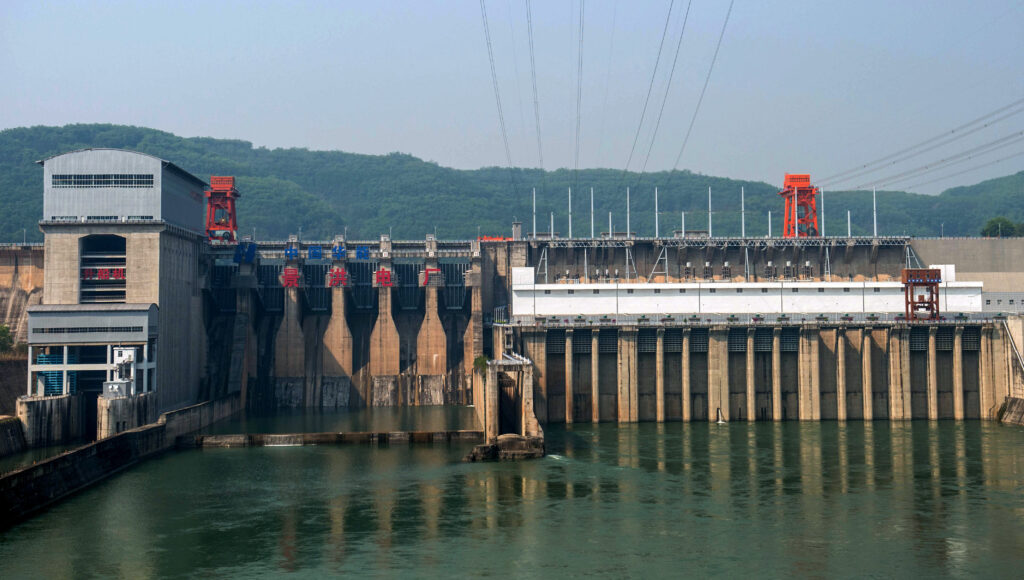The Mekong subregion is a geoeconomic hub within ASEAN, comprising Thailand, Cambodia, Laos, Vietnam and Myanmar. Its strategic location and abundant resources have enhanced its appeal to multinational corporations and great powers, situated at the intersection of major infrastructure development programs such as the Asian Development Bank’s Economic Corridor projects and China’s Belt and Road Initiative.
The region is covered by trade agreements such as the ASEAN Free Trade Area, the ASEAN Plus Free Trade Area framework and the Regional Comprehensive Economic Partnership. But action among major powers in the Mekong subregion has gradually shown signs of shifting from geopolitical manoeuvring to a geoeconomic battleground.
Historically, major powers have competed for influence in this strategic region to gain access to key resources, trade routes and geopolitical leverage. Among major players, Chinese, Japanese and South Korean companies have long been investors in the Mekong, underscoring the increasingly pivotal role of geoeconomics in shaping power dynamics in the Mekong.
The establishment of the Greater Mekong Subregion program by the Asian Development Bank in 1992 encompasses the Mekong countries and China, particularly its Yunnan province and Guangxi Zhuang Autonomous Region, and is aimed at bolstering regional economic relations. This gives China an advantage in cross-border trade and economic activities in the subregion compared with other powers such as the United States and Japan. China’s Belt and Road initiative and Lancang–Mekong Cooperation mechanism have become the primary driving forces behind economic activities in the Mekong.
In addition to the financing and construction of hydropower dams along the Mekong River, in 2022 a railway costing over US$6 billion tied the fate of land-locked Laos to China. Private enterprises have also begun to exert their presence in the region. Japan, a long-standing player through the Mekong–Japan Partnership framework, has intensified its economic involvement.
Huawei plans to establish an artificial intelligence and cloud computing training centre in Thailand and has expanded its market share in smartphones. Other Chinese smartphone brands have also performed well in Myanmar. Former Vietnamese president Vo Van Thuong met Huawei Chairman Liang Hua in Beijing on 19 October 2023, expressing confidence that Huawei’s involvement would boost Vietnam’s digital economy.
While Western companies exited Myanmar following the 2021 military coup, Chinese enterprises have moved in to fill the economic gap. But they have faced resistance from some local protesters in Myanmar, due to allegations on social media that Beijing supported the military government that took power in the 2021 coup. Others argue that China does not like the coup, with the Chinese ambassador to Myanmar Chen Hai stating that the situation is ‘not what China wants to see’.
Chinese vehicle manufacturer, Great Wall Motors, has invested in new energy vehicle production bases in Vietnam and Thailand. Thailand is also one of Japan’s largest business bases in Southeast Asia, with Japanese automaker Toyota announcing a US$4.34 billion investment in Thailand and starting a partnership with Commercial Japan Partnership Technologies and Thailand’s Charoen Pokphand Group on a hydrogen fuel project.
Since September 2020, following the Great Wall purchase of a car manufacturing plant in Rayong province, Thailand, the company has pursued a differentiation strategy that places greater emphasis on electric vehicles to compete against existing car manufacturers. Chinese automakers have gradually succeeded in the Thai market by implementing localisation strategies, which involve collaborating with local partners. Thailand’s motor industry has become a Japan–China battleground. Leading US electric vehicle manufacturer, Tesla, has also shown interest in investing in Thailand after visiting in December 2023.
In December 2020, the Korea–Myanmar Industrial Complex began construction, aiming to build economic links between South Korea and Myanmar. Despite the 2021 coup, 70 per cent of Japanese companies have retained or expanded their operations in Myanmar. In 2023, Japan indicated its intention to increase investment in the Eastern Economic Corridor project in Thailand. Then in February 2024, Japan announced its plan to move forward with establishing Japanese Special Economic Zones in Cambodia to help attract more investors from Japan.
Vietnamese leaders have sent encouragement to Japanese companies to enhance Vietnam’s manufacturing competitiveness, building upon the consensus established through the Japan–Vietnam Joint Initiative Agreement signed in 2003.
The expanding commercial interests in the Mekong subregion are set to yield economic benefits — but will require careful management of various challenges and risks. The success of market-oriented business strategies will impact the major powers’ influence in the Mekong, as their business endeavours are likely to facilitate the expansion of geostrategic influence for their respective home countries.Companies can strengthen economic interdependence or diplomatic relations between their home country and host countries through its commercial and corporate diplomatic activities. But this change will prompt debates as to whether the business actions are also equally beneficial to the various stakeholders within the Mekong.
Mekong countries can benefit economically from companies’ commercial activities and can play a constructive role in fostering cooperation among major powers. Mekong stakeholders need to examine how to achieve strategic hedging in the business field, while companies may also need to adapt their business strategies to navigate the Mekong’s evolving geopolitical landscape.
Yunkang Liu is a PhD student in Politics and International Relations at the School of Social Sciences, the University of New South Wales, Sydney. He previously served as a consultant at UNESCO.

